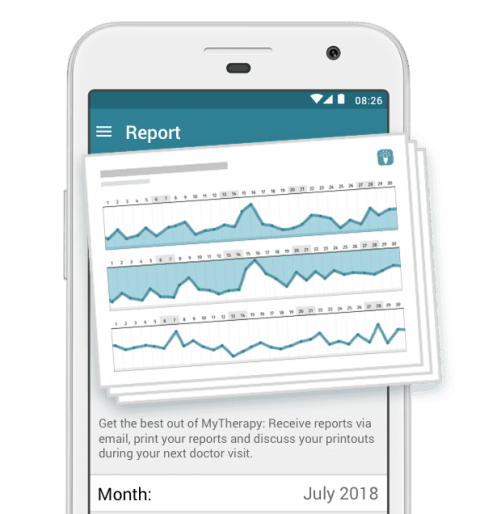What is endometriosis?
Endometriosis is a chronic condition in which the tissue similar to that found in the lining of the uterus starts to grow elsewhere, such as around the ovaries and fallopian tubes. The lining of your uterus is called the endometrium, hence the name endometriosis.
It can have a significant physical as well as emotional impact on your life and there is no known cure. However, there are ways in which you can manage the symptoms of the condition and maintain a good quality of life.
Endometriosis is a relatively common condition, and one of the biggest causes of female infertility, affecting around 10 percent of women. Despite this, many people have never heard of it, which highlights a clear need to increase awareness of this disease that affects an estimated 176 million women worldwide.
Stages of endometriosis
There are four stages or types of endometriosis. Factors such as the location, number size, and depth of endometrial implants can determine the stage or type of the disorder.
- Minimal
Minimal endometriosis is characterized by small lesions or wounds and shallow endometrial implants on your ovary. There could also be inflammation around your pelvis. - Mild
Mild endometriosis is characterized by light lesions and shallow implants that appear on the ovary and pelvic lining. - Moderate
Moderate endometriosis is characterized by deep implants found on the ovary and pelvic lining, as well as more lesions. - Severe
The most severe stage or type of endometriosis is characterized by deep implants that appear on your ovaries and pelvic lining. There can also be lesions on your fallopian tubes and bowels.
Symptoms of endometriosis
Symptoms of endometriosis can vary drastically from person to person. Many of the key symptoms involve experiencing pain that becomes particularly prevalent during your period. Here is a list of some of the most common symptoms, however it is not exhaustive:
- Pain in your lower abdomen or back that is usually worse during your period
- Period pain that prevents you from doing normal activities
- Pain when urinating or pooing during your period
- Heavy periods
- Feelings of nausea, constipation, diarrhea, or blood in your urine during your period
- Vaginal pain during or after sex
- It is also possible to experience waves of depression if you suffer from endometriosis. If you are struggling with depression, click here.
One of the main complications of endometriosis is difficulty getting pregnant. Surgery may be able to help improve your chances of conceiving; however, this is not guaranteed.
It is also very important to note that you may experience no symptoms at all. This is why it’s vital to have regular gynecological exams which will allow your gynecologist to spot any problems or changes in your vaginal health.
What causes endometriosis?
The cause of endometriosis is not known. However, several theories have been put forward. Some of these include:
- Retrograde menstruation
This occurs when some of the uterus lining flows up through the fallopian tubes and embeds itself on the organs of the pelvis instead of leaving the body as a period. - Genetics
The condition tends to run in families and can affect people belonging to certain ethnic groups more than others. If you have a family history of endometriosis, speak to your doctor. - Issues with the immune system
Some people theorize that endometriosis can result from a fault in the immune system that isn’t destroying endometrial cells. - Endometrium cells spreading
It has been suggested that endometriosis can be caused by endometrium cells spreading being transported to other parts of the body through the bloodstream or lymphatic system.
Endometriosis risk factors
According to Johns Hopkins Medicine, about 2 to 10 percent of childbearing women in the United States between the ages of 25-40 have endometriosis. It is most common for it to develop years after you have started your period.
Understanding some of the risk factors of the condition can help you determine whether or not you are susceptible to developing endometriosis and help you to be more prepared to identify and deal with the symptoms.
If you’re concerned about your risk of developing the condition, speak to your doctor. Here are some of the key risk factors:
- Age
Women of all ages can develop endometriosis, however, it most commonly affects women between the ages of 25 and 40. - Family history
Endometriosis can run in families. Speak to your doctor if you have a family member with the condition. - Menstrual history
Shorter menstrual cycles, heavier or longer periods, and menstruation that starts at a young age can put you at a higher risk of developing endometriosis. Speak to your doctor about the specific nature of your period and the problems that you encounter. - Pregnancy history
Women who haven’t had children run a greater risk of developing the disease since pregnancy can temporarily decrease the symptoms. However, endometriosis can still develop in women who have had children.
How is endometriosis diagnosed?
Diagnosing endometriosis can be difficult since symptoms can vary drastically from person to person. Added to this, some of the symptoms related to endometriosis may be caused by other conditions and are relatively common in women having periods. For example, whilst strong period pain is a symptom of endometriosis, many women experience severe period pain that disrupts their daily life, which is not necessarily related to endometriosis. The same applies to heavy periods.
If you are experiencing some of the symptoms linked to endometriosis, and if they are having a big impact on your life, you must speak to your doctor. It can be helpful to write symptoms down and keep track of them before you go to see a doctor so that you can give them a more accurate idea of what you are experiencing. There are many helpful period tracker and symptoms tracker apps that can help with this.
Your doctor will ask you about your symptoms and may examine your stomach and vagina. They may also refer you to a gynecologist if they suspect you have endometriosis, who will then conduct further tests such as an ultrasound of laparoscopy.
These ultrasounds may involve a transvaginal ultrasound or an abdominal ultrasound. The former involves a transducer being inserted into the vagina. These tests are designed to provide images of your reproductive organs to help your doctor identify cysts and other abnormalities. However, it cannot tell for sure whether or not you have the condition.
The only sure way to know whether or not you have endometriosis is through a laparoscopy. This involves a surgeon passing a thin tube through a cut in your abdomen so that they can examine the endometrium.
How is endometriosis treated?
Whilst there is no cure for endometriosis, there is a variety of treatment options that can help lessen the symptoms of the disease and improve your chances of conceiving. These include:
- Painkillers
Ibuprofen and paracetamol can help you deal with the pain associated with the disease. - Contraceptives
These can include the combined pill, the contraceptive patch, and the implant. - Hormone medicines
Gonadotropin-releasing hormone (GnRH) analogues can block the production of estrogen and stimulate an artificial menopause. - Surgery
You can undergo surgery to cut away patches of the endometriosis tissue. However, it is important to speak to your doctor about the possible risks that can result from this procedure such as infection, bleeding, or damage to organs. - Operation
It is possible to have an operation to remove part or all of the infected organs. In most extreme cases this would involve a hysterectomy (an operation to remove the uterus).
Endometriosis awareness
Endometriosis can have a significant emotional and physical impact on your life. It is important to know where to turn for support when dealing with the condition and to ensure that we promote a stronger awareness and understanding of the disease.
You may find it helpful to contact a support group such as the endometriosis association who can offer support and advice.
Endometriosis UK also have a helpline you can call on 0808 808 2227 and an online community.
Endometriosis Awareness Month takes place in March with the aim of increasing awareness surrounding this disease which impacts many women’s lives. However, endometriosis awareness should be a constant effort, and not just one we focus on in March. For women with the condition, endometriosis affects their lives every day, not just for one month of the year, and with many women discovering they have it every day, it is vital they have the support they need.
Read more about how you can advocate for endometriosis awareness here



